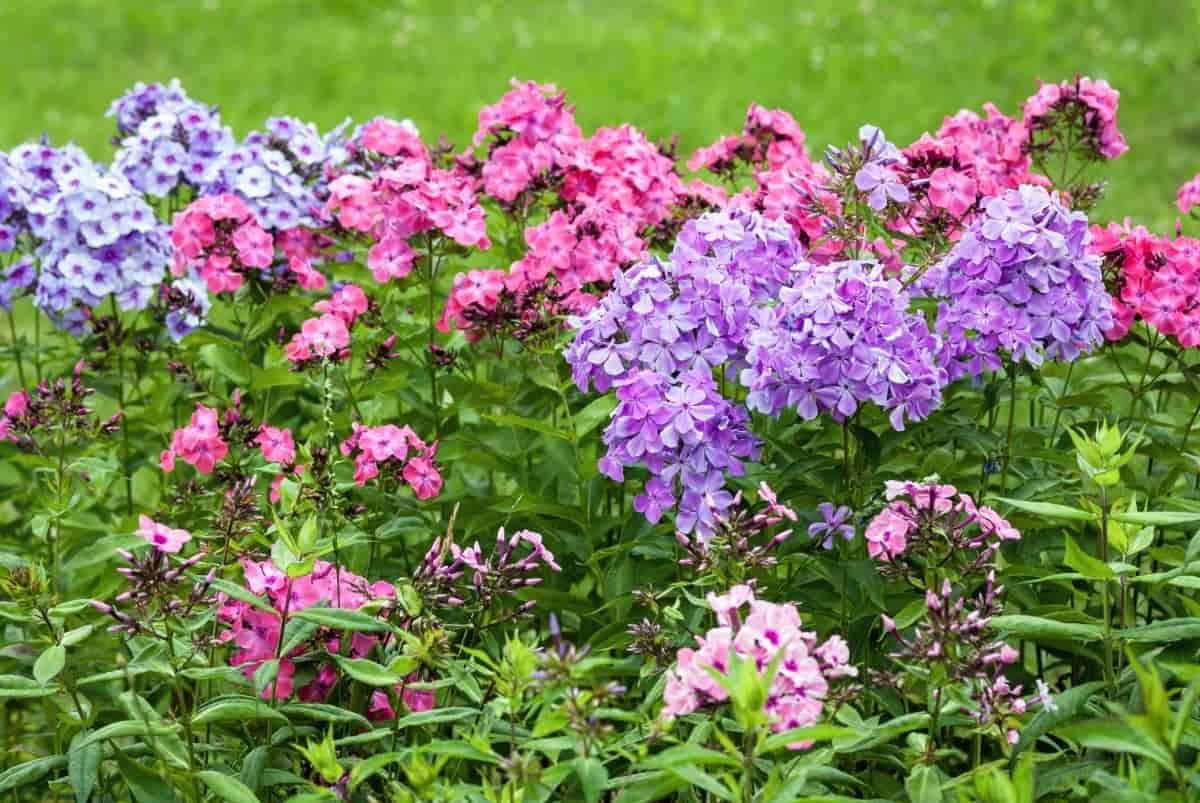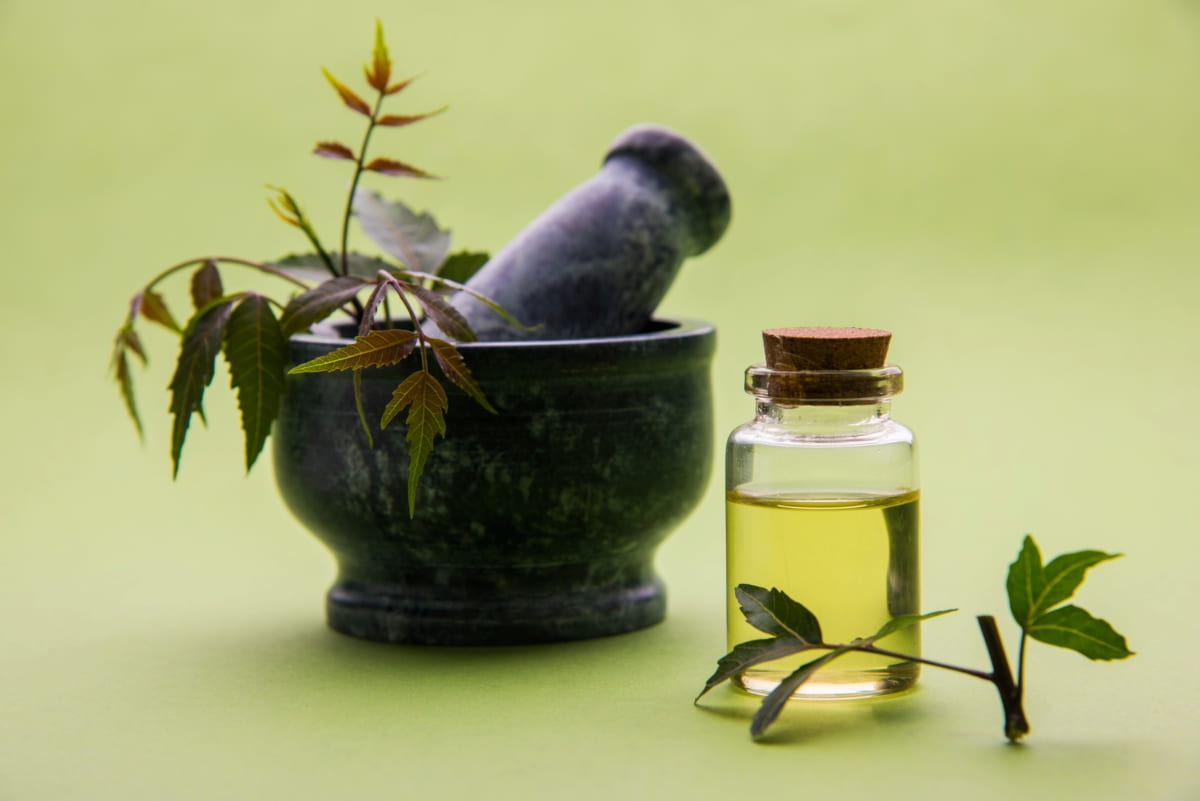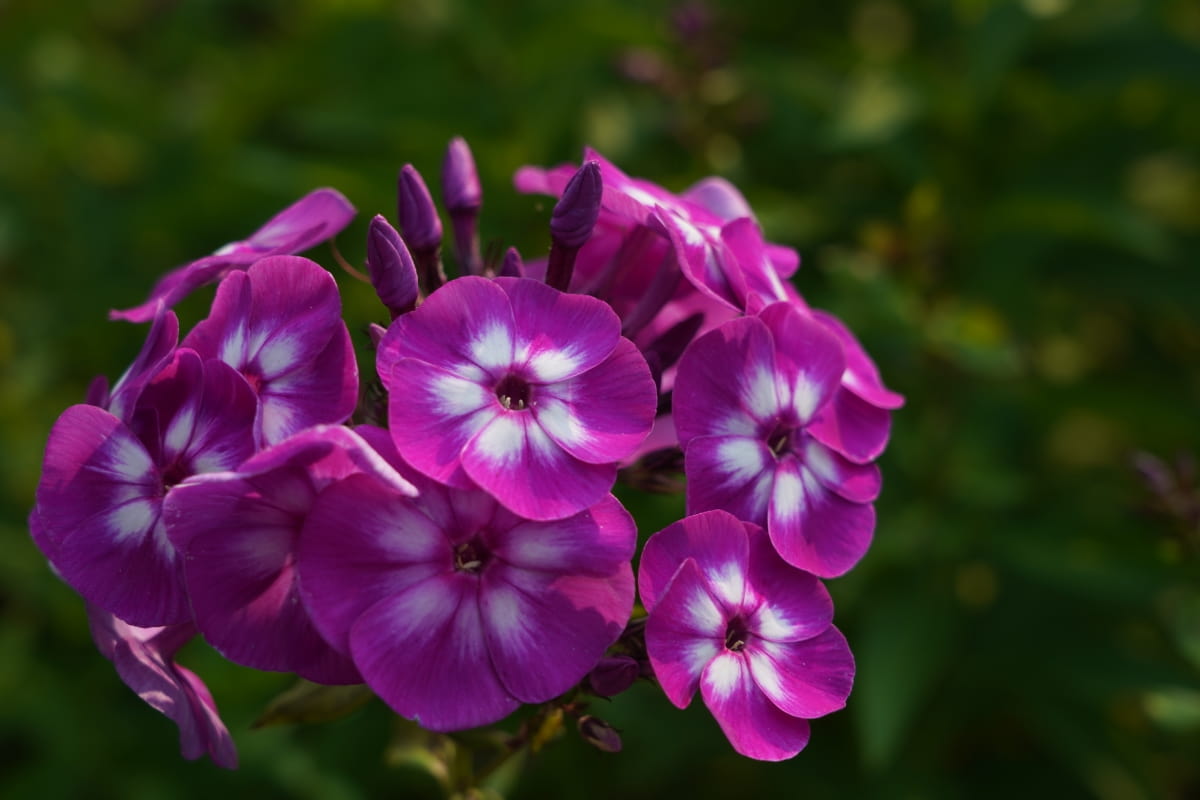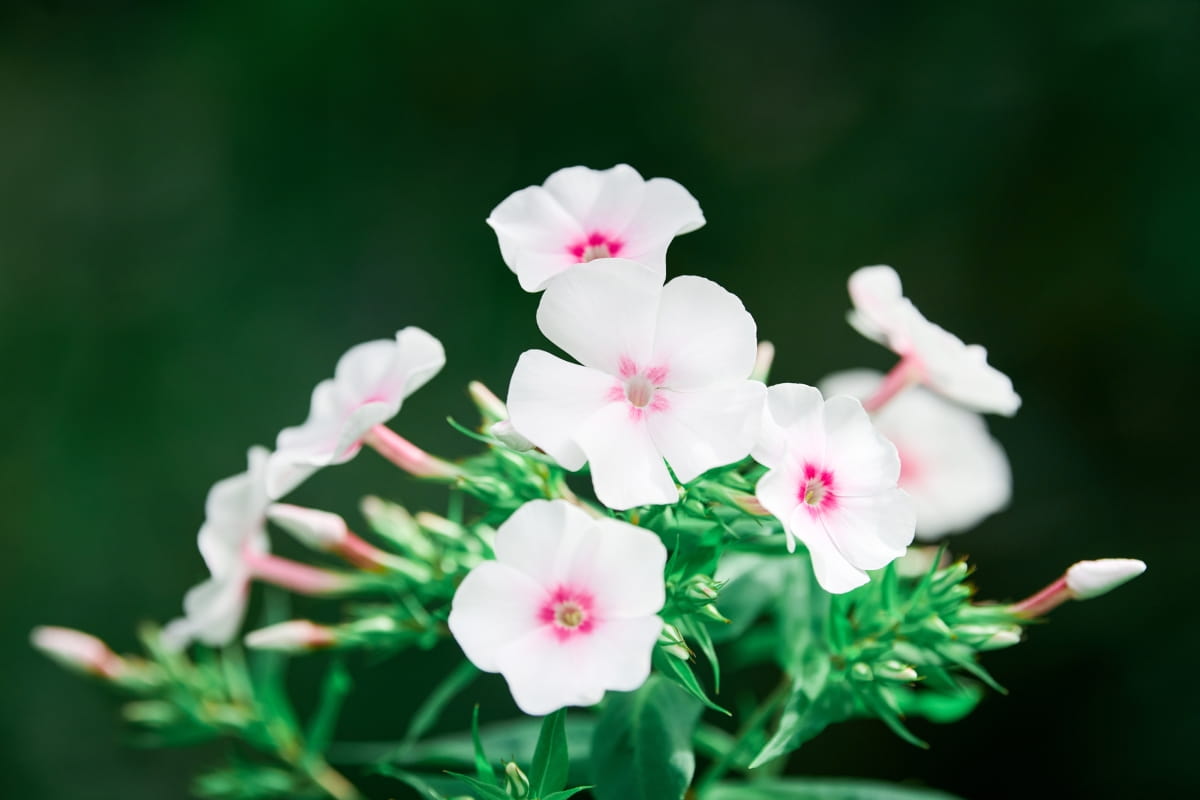Garden phlox, cherished for its vibrant blooms and fragrance, often faces threats from common pests that can compromise its health and beauty. Among the most prevalent pests are aphids, leaf rollers, thrips, and two-spotted spider mites.
Understanding the Impact of Pests on Garden Phlox
These pests can have detrimental effects on garden phlox, and the common signs of pests on phlox including reduced vigor, stunted growth, decreased flowering, and even death if left untreated. Also pests like aphids and spider mites can transmit diseases, further compromising the plant’s health. Effective pest management strategies are essential to protect garden phlox and maintain their beauty and vitality.

How to Get Rid of Garden Phlox Bugs
Preventive Measures
Cultivating Healthy Soil for Disease Resistance
Garden phlox pest control by ensuring proper soil drainage to prevent waterlogging. Incorporate organic matter such as vermicompost or well-aged manure to improve soil nutrient levels, promoting healthy root growth and disease resistance. Avoid over-fertilizing, as excessive nitrogen can make plants more susceptible to diseases like powdery mildew. Removing and disposing of diseased plant material promptly to prevent the spread of pathogens.
Choosing Disease-Resistant Phlox Varieties
Look for cultivars bred for resistance to common pests and disease-resistant varieties. Some popular disease-resistant phlox cultivars include ‘David,’ ‘Jeana,’ and ‘Robert Poore.’ Additionally, consider purchasing certified disease-free plants from reputable nurseries to minimize the risk of introducing pathogens to your garden.
Physical Pest Removal Techniques
Handpicking: Immediate Removal of Larger Pests
Handpicking involves inspecting the plants regularly, especially the undersides of leaves and along stems, and carefully plucking off any pests you find to eliminate phlox bugs. Drop them into a bucket of soapy water to prevent them from crawling back onto the plants. Handpicking is an effective method for controlling larger pests without the use of chemicals and can help reduce pest populations before they cause significant damage to the plants.
Water Spraying: Dislodging Aphids and Mites
A strong stream of water from a garden hose can dislodge aphids, spider mites, and other small pests. Focus the spray on the undersides of leaves and the areas where pests are congregating. The force of the water will knock the pests off the plants, reducing their numbers and preventing further damage. Repeat the process as needed, especially after rain or irrigation, to keep pest populations in check.
Organic Pest Control Solutions
Neem Oil: A Natural Insecticide for Phlox Pests
Neem oil for phlox plants works by disrupting the pests’ hormonal balance, inhibiting their feeding and reproduction. Treating garden phlox pests, dilute neem oil according to the product label instructions and spray it onto the affected plants, covering all surfaces thoroughly. Repeat the application every 7-14 days or as needed, especially after rainfall. As an organic pest control for phlox, neem oil is harmless for humans, pets, and beneficial insects when applied properly, making it an eco-friendly option for pest control in the garden.
In case you missed it: Management of Capsid Bug in Gardens: 100% Effective Treatment and Control Strategies to Get Rid of Them

Insecticidal Soap Spray: Effective Against Soft-Bodied Insects
Insecticidal soap spray is a safe and effective organic solution for controlling soft-bodied insects like spider mites and aphids on garden phlox. Insecticidal soap works by suffocating the pests upon contact while leaving beneficial insects unharmed. To use, dilute the insecticidal soap according to the product label instructions and spray it onto the affected plants, mainly focusing on the undersides of leaves where pests tend to hide. Repeat the application every 7-10 days or as needed until the pest infestation is under control.
Chemical Control Methods
Selecting the Right Chemical Pesticides
When choosing chemical pesticides for phlox bugs, select products specifically labeled for use on ornamental plants and listed pests. Follow label instructions carefully, considering factors like application method, dosage, and safety precautions. Opt for products with a shorter residual period to minimize environmental impact. Additionally, prioritize pesticides with lower toxicity to beneficial insects for phlox gardens. Always follow the label instructions to ensure the safe and effective use of chemical pesticides in the garden.
Application Tips for Chemical Treatments
- Choose a calm, dry day for application to minimize drift and ensure thorough coverage of the plants.
- Wear appropriate protective gear, including hand gloves, goggles, and a mask, when handling chemical pesticides.
- Mix these systemic pesticides for garden phlox according to the label instructions and apply them evenly to the affected plants, covering all surfaces, mainly focusing on the undersides of leaves.
- After application, monitor the plants closely for any adverse effects and follow up with additional treatments as needed, adhering to label instructions for reapplication intervals.
Biological Pest Control
Beneficial Insects: Natural Predators of Garden Pests
As natural remedies for phlox pests, introduce beneficial insects such as ladybugs, lacewings, and predatory beetles. These natural predators feed on aphids, spider mites, and other harmful pests, helping to keep their populations in check. To attract beneficial insects to your garden, avoid using broad-spectrum pesticides that can harm them and provide shelter and nectar sources such as flowering plants.
Implementing Companion Planting to Deter Pests
For preventing bugs in garden phlox, companion planting with aromatic herbs like basil, thyme, or mint can repel pests like aphids, and spider mite treatment for phlox. Additionally, planting flowers like marigolds, nasturtiums, or calendula around phlox can attract beneficial insects that prey on pests. Consider interplanting phlox with these companion plants in your garden beds or containers to create a more diverse and pest-resistant environment. Experiment with different companion planting for phlox to find what works best for your garden’s pest management needs.
In case you missed it: How to Get Rid of White Bugs on Hibiscus: 100% Effective Way to Kill Mealybugs and White Flies

Cultural Controls for Long-Term Management
Regular Pruning to Improve Air Circulation
Regular pruning of garden phlox helps improve air circulation around the plants, reducing humidity levels and minimizing conditions favorable for pest infestation. Remove dead or diseased foliage, as well as any overcrowded or overlapping branches, to open up the plant canopy and allow for better airflow. This not only provides safe pest control in phlox but also promotes overall plant health and vigor.
Mulching to Prevent Pest Infestation
As DIY pest control for phlox, applying a layer of organic mulch around garden phlox helps to create a less hospitable environment for pests. Certain types of mulch, like cedar or pine bark, may contain natural compounds that repel pests. Choose a mulch that complements your garden aesthetics and spread it evenly around the base of phlox plants, avoiding direct contact with stems to prevent rot.
Treatment of Infected Plants
Isolation of Affected Plants to Prevent Spread
Upon discovering pest-infested garden phlox, promptly isolate the affected plants from healthy ones to prevent the spread of pests to nearby specimens. Place the infested plants in a separate area of the garden or indoors, if possible, away from other susceptible plants. This isolation measure helps contain the Phlox plant bug infestation and allows for targeted treatment without risking further contamination of the surrounding vegetation.
Proper Disposal of Infested Plant Material
Bag up and seal any pruned branches, leaves, or flowers that show signs of pest infestation. Avoid composting infected plant material, as pests may survive and spread when the compost is used in the garden. Instead, dispose of the bagged material in the trash or through municipal green waste disposal services to ensure thorough eradication of pests.
Reviving Damaged Garden Phlox
Nutrient Management for Stressed Plants
Choose a higher phosphorus content fertilizer to promote root development and flower production. Apply the fertilizer according to package instructions, avoiding excessive application that can lead to nutrient imbalances or burn the plants. Additionally, consider supplementing with organic amendments such as vermicompost or well-aged manure to improve soil fertility and provide a slow-release source of nutrients for sustained plant growth.
Strategies for Encouraging Regrowth and Bloom
To encourage regrowth and bloom in damaged garden phlox, provide optimal growing conditions by ensuring adequate sunlight, water, and air circulation. Trim back any dead or damaged foliage to stimulate new growth and improve the plant’s overall appearance. Regularly deadhead spent flowers to promote blooming throughout the growing season. Mulch around the base of the plants to conserve moisture and maintain soil temperature, which can reduce stress and encourage vigorous growth.
In case you missed it: How to Use Honeysuckle Oil for Pest Control: DIY Homemade Recipe for Natural Bug Repellent

Conclusion
In conclusion, implementing a combination of eco-friendly phlox pest treatments, including physical, organic, and chemical pest control methods, can effectively manage garden phlox bugs and ensure the health of your plants. With proper care and diligence, your garden phlox can flourish pest-free for seasons to come.
- Deworming Schedule for Dogs/Puppies: A Beginners Guide
- How to Prevent and Control Parasites in Goats
- Beneficial Insects in Pest Management
- Natural Solutions for Pest Control in Flower Gardens
- Types of Fungicides Used in Agriculture
- Common Issues in the Fruit Development Stage of Pomegranate Farming
- Fruit Development Issues in Papaya: Easy Solutions and Treatment
- Soil-Borne Diseases and How to Protect Your Plants
- Practices to Prevent Disease Spread in the Garden